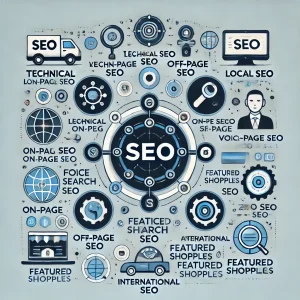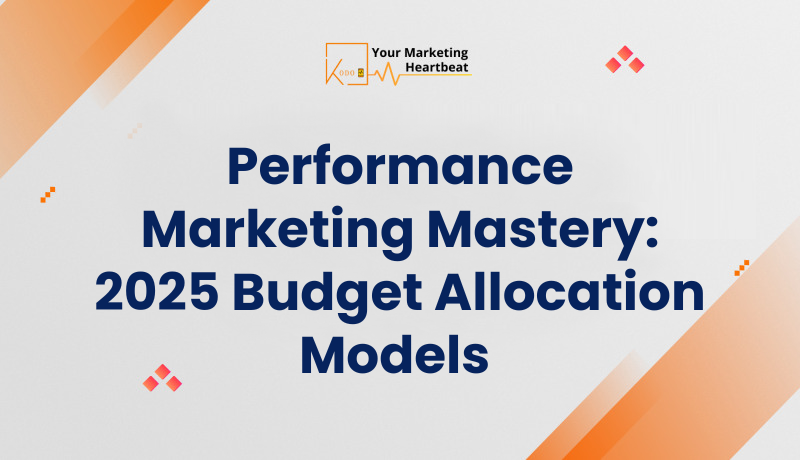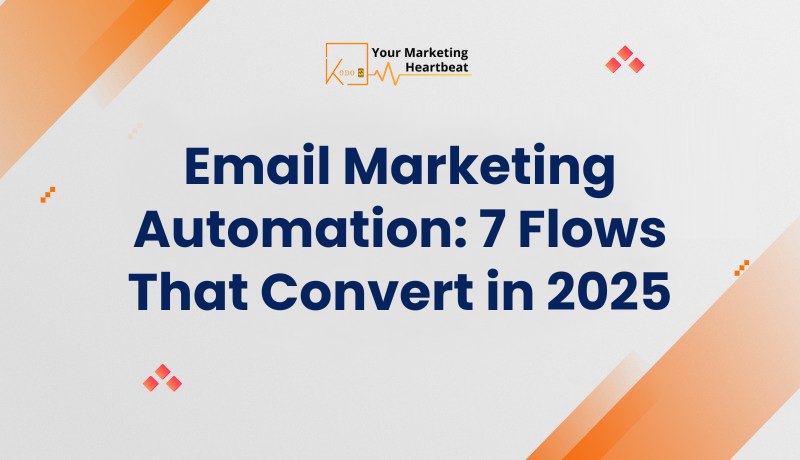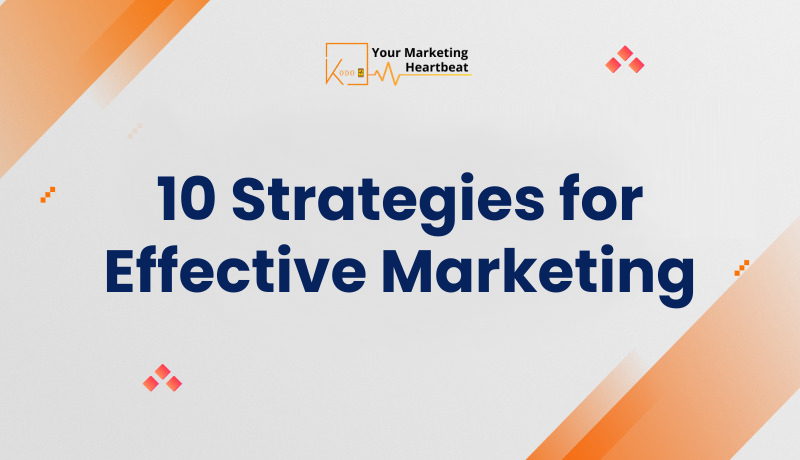
Local SEO Secrets: Rank #1 in 2025 Without Backlinks

In the ever-evolving digital landscape, local SEO services have become essential for businesses striving to enhance their online visibility. As we approach 2025, the rules of the game are changing, and savvy entrepreneurs are realizing that ranking at the top of local search results doesn’t necessarily require an extensive backlink strategy. Instead, a holistic approach to local SEO services can propel your business to the coveted #1 spot without relying on traditional link-building techniques.
The digital marketplace is more crowded than ever, with consumers turning to search engines as their primary method of finding local products and services. This shift in consumer behavior has made local SEO services an indispensable tool for businesses looking to thrive in their communities. By focusing on strategic optimization techniques, businesses can significantly improve their visibility in local search results, driving more foot traffic and online conversions.
As we delve into the secrets of dominating local search rankings in 2025, we’ll explore innovative strategies that go beyond conventional wisdom. From leveraging your Google Business Profile to harnessing the power of geo-targeted keywords, we’ll uncover the tactics that will set your business apart in the local digital ecosystem. Let’s embark on this journey to unlock the potential of your local online presence and secure your position at the top of search results.
The Evolution of Local SEO: What’s Changed?
Local SEO has undergone significant transformations since its inception. In the early days, simply having a website and a few local citations was often enough to rank well in local search results. However, as search engines have become more sophisticated and user expectations have evolved, the landscape of local SEO has changed dramatically.
One of the most notable shifts has been the increased emphasis on user experience and intent. Search engines now prioritize businesses that not only have a strong online presence but also demonstrate their relevance and value to local searchers. This means that factors such as the quality and relevance of your content, the accuracy of your business information, and the overall user experience of your website play a much larger role in determining your local search rankings.
Another significant change has been the rise of mobile search. With more people than ever using smartphones to find local businesses, search engines have adapted their algorithms to favor mobile-friendly websites and local businesses that cater to on-the-go consumers. This shift has made it essential for businesses to optimize their online presence for mobile users, ensuring that their websites are responsive and their local listings are easily accessible on mobile devices.
The introduction of voice search and AI-powered assistants has also had a profound impact on local SEO. As more users turn to voice commands to find local businesses, optimizing for natural language queries and long-tail keywords has become increasingly important. This trend has pushed businesses to focus on creating content that answers specific questions and provides detailed information about their products and services.
Lastly, the importance of reviews and user-generated content has skyrocketed. Search engines now view customer reviews as a key indicator of a business’s reputation and relevance. Positive reviews not only improve your visibility in local search results but also play a crucial role in influencing potential customers’ decisions.
As we look towards 2025, these trends are expected to continue evolving, with search engines placing even greater emphasis on authenticity, user experience, and the ability of businesses to meet the specific needs of local consumers.

The Power of Google Business Profile in 2025
As we approach 2025, Google Business Profile (GBP) has solidified its position as the cornerstone of local SEO. This powerful tool has evolved from a simple business listing to a comprehensive platform that can significantly influence your local search rankings. Here’s why GBP is more crucial than ever and how you can leverage it to dominate local search results:
Optimizing Your GBP for Maximum Visibility
- Complete and Accurate Information: Ensure every field in your GBP is filled out with accurate, up-to-date information. This includes your business name, address, phone number (NAP), website URL, business hours, and services offered.
- High-Quality Photos and Videos: Regularly upload high-resolution images and videos that showcase your business, products, and services. Visual content not only engages potential customers but also signals to Google that your listing is active and relevant.
- Utilize Posts and Offers: Take advantage of GBP’s posting feature to share updates, events, and special offers. Regular posts keep your profile fresh and can improve your visibility in local search results.
- Encourage and Respond to Reviews: Actively solicit reviews from satisfied customers and respond promptly to all reviews, both positive and negative. This engagement demonstrates your commitment to customer service and can improve your local search rankings.
- Leverage Q&A Feature: Monitor and respond to questions in the Q&A section of your GBP. This not only provides valuable information to potential customers but also helps improve your local SEO by addressing common queries directly on your profile.
Harnessing Advanced GBP Features
- Products and Services: Use the Products and Services sections to provide detailed information about what you offer. This helps Google understand your business better and can improve your visibility for relevant searches.
- Attributes: Take advantage of all relevant attributes available for your business category. These help potential customers quickly understand what makes your business unique.
- Booking and Messaging: If applicable, enable booking and messaging features to make it easy for customers to interact with your business directly through your GBP.
- Insights and Analytics: Regularly review your GBP insights to understand how customers are finding and interacting with your profile. Use this data to refine your local SEO strategy.
By fully optimizing your Google Business Profile and leveraging its advanced features, you can significantly improve your visibility in local search results without relying heavily on backlinks. Remember, in 2025, a well-maintained and engaging GBP is not just an asset—it’s a necessity for local businesses looking to dominate their market.
Mastering Geo-Targeted Keywords for Local Dominance – SEO
In 2025, the strategic use of geo-targeted keywords remains a powerful tool for boosting your local search rankings. However, the approach to keyword optimization has evolved, becoming more nuanced and focused on user intent. Here’s how you can master geo-targeted keywords to achieve local dominance:
Understanding the Importance of Geo-Targeted Keywords
Geo-targeted keywords are search terms that include specific geographic locations relevant to your business. These keywords help search engines understand where your business operates and which searches are most relevant to your offerings. By incorporating these keywords effectively, you can improve your visibility for local searches without relying on extensive backlink strategies.
Strategies for Effective Geo-Targeting
- Conduct Thorough Local Keyword Research: Use tools like Google Keyword Planner, SEMrush, or Moz Local to identify popular search terms in your area. Look for keywords that combine your services or products with local identifiers.
- Incorporate Long-Tail Local Keywords: Focus on longer, more specific keyword phrases that include your location. For example, instead of just “pizza restaurant,” target phrases like “best deep-dish pizza in downtown Chicago.”
- Optimize for Neighborhood-Specific Searches: If you serve multiple neighborhoods or districts within a city, create content that targets each specific area. This can help you capture more localized searches.
- Use Natural Language for Voice Search: With the rise of voice search, optimize for conversational queries. Include phrases like “near me” or “open now” in your content to match how people speak when using voice assistants.
- Create Location-Specific Landing Pages: For businesses with multiple locations, create individual pages for each location. Optimize these pages with location-specific content and keywords.
Implementing Geo-Targeted Keywords Effectively
- On-Page Optimization: Incorporate geo-targeted keywords naturally into your website’s content, including:
- Page titles and meta descriptions
- Headers and subheaders
- Body content
- Image alt text
- URL structures
- Local Content Creation: Develop blog posts, articles, and resources that focus on local topics and events. This not only helps with keyword inclusion but also demonstrates your local expertise.
- Optimize Your Google Business Profile: Include relevant geo-targeted keywords in your business description and posts on your GBP.
- Local Schema Markup: Implement schema markup on your website to provide search engines with detailed information about your business, including your location and service area.
- Mobile Optimization: Ensure your website is fully optimized for mobile devices, as many local searches are performed on smartphones.
Avoiding Keyword Stuffing
While geo-targeted keywords are important, it’s crucial to use them naturally and avoid over-optimization. Search engines in 2025 are highly sophisticated and can penalize websites that engage in keyword stuffing. Focus on creating valuable, informative content for your local audience, and incorporate keywords in a way that enhances, rather than detracts from, the user experience.
By mastering the art of geo-targeted keywords, you can significantly improve your local search rankings without relying on extensive backlink strategies. Remember, the key is to balance keyword optimization with creating high-quality, relevant content that serves the needs of your local audience.
The Role of Content in Local SEO Success
In 2025, content remains king in the realm of local SEO, but its role has evolved to become more nuanced and targeted. Creating high-quality, locally relevant content is not just about improving search rankings; it’s about establishing your business as a valuable resource in your community. Here’s how you can leverage content to boost your local SEO success:
Developing a Local Content Strategy
- Understand Your Local Audience: Research the interests, needs, and pain points of your local community. Use this information to create content that resonates with your target audience.
- Create Location-Specific Content: Develop content that specifically addresses local issues, events, or topics. This could include:
- Local news and events coverage
- Guides to local attractions or activities
- Spotlights on local businesses or community members
- Information about local laws or regulations relevant to your industry
- Showcase Local Expertise: Position your business as a local authority by creating in-depth content about topics related to your industry and area. This could include:
- Expert advice columns
- Local industry trend analysis
- Case studies featuring local clients or projects
- Utilize Various Content Formats: Diversify your content to appeal to different user preferences:
- Blog posts and articles
- Videos showcasing your local area or business
- Infographics with local statistics or information
- Podcasts discussing local topics or interviewing local figures
Optimizing Content for Local Search
- Incorporate Geo-Targeted Keywords: Naturally include location-specific keywords in your content, headers, and meta descriptions.
- Use Local Schema Markup: Implement schema markup to provide search engines with detailed information about your local content.
- Create Location Pages: For businesses with multiple locations, create individual pages for each location with unique, locally relevant content.
- Optimize for Local Featured Snippets: Structure your content to increase the chances of appearing in featured snippets for local queries. This often involves providing concise answers to common local questions.
Leveraging User-Generated Content
- Encourage Customer Reviews: Actively solicit reviews from local customers and showcase them on your website and social media platforms.
- Feature Customer Stories: Share stories and testimonials from local customers to build trust and demonstrate your local impact.
- Create a Community Forum: Consider hosting a forum or discussion board on your website where local customers can ask questions and share experiences.
Collaborating with Local Influencers and Businesses
- Guest Posting: Contribute guest posts to local blogs or news sites to increase your visibility and establish authority.
- Local Influencer Partnerships: Collaborate with local influencers or bloggers to create content that reaches a wider local audience.
- Cross-Promotion: Partner with complementary local businesses to create joint content or promotional materials.
Maintaining Consistency and Freshness
- Regular Updates: Keep your content fresh by regularly updating existing pages and creating new content.
- Seasonal Content: Create content that aligns with local seasons, events, or holidays to stay relevant throughout the year.
- Local News Monitoring: Stay on top of local news and trends to quickly create timely, relevant content.
By focusing on creating high-quality, locally relevant content, you can significantly improve your local SEO performance without relying heavily on backlinks. Remember, the goal is not just to rank well in search results, but to provide genuine value to your local community. This approach not only improves your search visibility but also helps build lasting relationships with local customers.
Leveraging Reviews and Reputation Management
In 2025, customer reviews and online reputation management have become even more critical components of local SEO success. Search engines increasingly view reviews as a key indicator of a business’s relevance and quality, making them a powerful factor in local search rankings. Here’s how you can leverage reviews and manage your online reputation to boost your local SEO:

The Impact of Reviews on Local SEO
- Quantity and Frequency: Consistently receiving new reviews signals to search engines that your business is active and relevant.
- Quality and Sentiment: Positive reviews can improve your local search rankings, while a high number of negative reviews can harm your visibility.
- Keywords in Reviews: Reviews that naturally include relevant keywords can help improve your search rankings for those terms.
- Review Diversity: Having reviews across multiple platforms (Google, Yelp, industry-specific sites) can strengthen your overall online presence.
Strategies for Generating Positive Reviews
- Make Asking for Reviews a Habit: Train your staff to politely ask satisfied customers for reviews at the point of service or immediately after.
- Simplify the Review Process: Provide customers with direct links to your review profiles, making it easy for them to leave feedback.
- Follow Up with Customers: Send follow-up emails after a purchase or service, including a link to leave a review.
- Leverage QR Codes: Use QR codes in-store or on receipts that lead directly to your review profiles.
- Offer Incentives (Carefully): Consider offering small incentives for reviews, but be cautious to comply with platform guidelines and avoid appearing to buy positive reviews.
Effective Review Management
- Respond to All Reviews: Promptly respond to both positive and negative reviews. This shows that you value customer feedback and are actively engaged with your community.
- Address Negative Reviews Professionally: When responding to negative reviews, remain professional, apologize for any issues, and offer to resolve the problem offline.
- Highlight Positive Reviews: Share positive reviews on your website and social media platforms to amplify their impact.
- Monitor Review Sites Regularly: Set up alerts to notify you of new reviews across various platforms so you can respond quickly.
Leveraging Reviews for Content and SEO
- Use Review Insights for Content Creation: Analyze common themes in your reviews to create content that addresses frequently asked questions or highlights popular aspects of your business.
- Incorporate Reviews into Your Website: Feature selected reviews on your website, potentially improving on-page SEO and user trust.
- Create Case Studies: Turn particularly positive experiences into detailed case studies, which can serve as valuable, keyword-rich content.
Handling Fake or Malicious Reviews
- Identify Suspicious Reviews: Learn to recognize signs of fake reviews, such as multiple reviews from the same IP address or reviews that don’t match actual customer experiences.
- Report Fraudulent Reviews: Use the reporting tools provided by review platforms to flag fake or malicious reviews for removal.
- Maintain Transparency: If you suspect competitors are leaving fake negative reviews, address the issue publicly in a professional manner.
By effectively managing your reviews and online reputation, you can significantly enhance your local SEO performance. Remember, in 2025, your online reputation is often the first impression potential customers have of your business. A strong, positive online presence not only improves your search rankings but also builds trust with your local community, driving both online and offline business growth.
Technical SEO Essentials for Local Businesses – SEO
In 2025, while content and user experience remain crucial, the technical aspects of SEO continue to play a vital role in achieving and maintaining high local search rankings. For local businesses, mastering these technical elements can provide a significant competitive advantage. Here are the key technical SEO essentials that local businesses should focus on:
Mobile Optimization -SEO
- Responsive Design: Ensure your website is fully responsive and provides an optimal viewing experience across all devices, especially smartphones and tablets.
- Mobile-First Indexing: With Google’s mobile-first indexing, prioritize the mobile version of your website in terms of content and user experience.
- Page Speed Optimization: Use tools like Google PageSpeed Insights to identify and fix issues that slow down your mobile site.
- Accelerated Mobile Pages (AMP): Consider implementing AMP for faster loading on mobile devices, which can improve user experience and potentially boost rankings.
Local Schema Markup – SEO
- Implement LocalBusiness Schema: Use structured data markup to provide search engines with detailed information about your business, including name, address, phone number, hours of operation, and services offered.
- Review Schema: Implement review schema to display star ratings in search results, potentially increasing click-through rates.
- Event Schema: For businesses that host local events, use event schema to improve visibility in local event searches.
- Product Schema: If you sell products, use product schema to display pricing, availability, and reviews in search results.
Website Structure and Navigation
- Clear URL Structure: Use a logical, easy-to-understand URL structure that includes relevant keywords and location information where appropriate.
- Internal Linking: Implement a strong internal linking strategy to help search engines understand the structure of your site and the relationships between different pages.
- Breadcrumb Navigation: Use breadcrumb navigation to improve user experience and help search engines understand your site hierarchy.
- XML Sitemap: Create and submit an XML sitemap to search engines to ensure all your important pages are indexed.
Page Speed Optimization – SEO
- Image Optimization: Compress and properly format images to reduce load times without sacrificing quality.
- Minify CSS, JavaScript, and HTML: Remove unnecessary characters from your code to reduce file size and improve load times.
- Leverage Browser Caching: Use browser caching to store commonly used files on visitors’ devices, reducing load times for repeat visitors.
- Content Delivery Network (CDN): Consider using a CDN to serve your content from servers closer to your users’ physical locations.
HTTPS Implementation
- Secure Your Site: Implement HTTPS across your entire website to protect user data and benefit from the slight ranking boost that HTTPS provides.
- Proper Redirection: Ensure all HTTP pages are properly redirected to their HTTPS equivalents to avoid duplicate content issues.
Local Link Building
While the focus of this guide is on ranking without traditional backlinks, some local link building can still be beneficial:
- Local Business Directories: Ensure your business is listed in reputable local directories and chamber of commerce websites.
- Local Sponsorships: Sponsor local events or organizations to earn natural, locally relevant backlinks.
- Local Content Partnerships: Collaborate with other local businesses or organizations on content projects that can lead to natural link opportunities.
Voice Search Optimization
- Natural Language Processing: Optimize your content for natural language queries that are common in voice searches.
- Featured Snippet Optimization: Structure your content to increase chances of appearing in featured snippets, which are often used for voice search results.
- Local Keywords in Conversational Context: Include local keywords in a way that mirrors how people speak when asking for local information.
Regular Technical Audits
- Crawl Error Analysis: Regularly check for and fix crawl errors to ensure search engines can access all your important pages.
- Duplicate Content Check: Use tools to identify and resolve any duplicate content issues that could be diluting your SEO efforts.
- Mobile Usability Testing: Regularly test your site’s mobile usability and fix any issues that could be harming your mobile rankings.
By focusing on these technical SEO essentials, local businesses can create a strong foundation for their online presence. Remember, while content and user experience are crucial, a technically sound website ensures that search engines can properly crawl, index, and understand your site, ultimately leading to better local search rankings. In 2025, the businesses that excel in both the technical and content aspects of SEO will be best positioned to dominate their local search results.
Harnessing the Power of Local Citations
In 2025, while the focus has shifted away from traditional backlink building, local citations remain a crucial element of a successful local SEO strategy. These mentions of your business name, address, and phone number (NAP) across the web continue to play a significant role in establishing your business’s credibility and improving its visibility in local search results. Here’s how you can harness the power of local citations to boost your local SEO efforts:
Understanding the Importance of Local Citations
- Search Engine Trust: Consistent and accurate citations across multiple platforms help search engines verify your business information, increasing trust in your online presence.
- Local Relevance: Citations on local directories and websites signal to search engines that your business is relevant to specific geographic areas.
- Visibility Beyond Search Engines: Quality citations can drive direct traffic to your website from directory listings and improve overall online visibility.
Types of Citations to Focus On
- Core Citations: Ensure your business is listed on major platforms like Google Business Profile, Bing Places, Apple Maps, and Yelp.
- Industry-Specific Citations: Get listed in directories relevant to your business niche (e.g., TripAdvisor for hospitality businesses, Healthgrades for medical practices).
- Local Citations: Focus on local business directories, chamber of commerce websites, and community portals specific to your area.
- Social Media Profiles: Maintain consistent NAP information across all your social media profiles.
Strategies for Building and Managing Citations
- Conduct a Citation Audit: Use tools like Moz Local or BrightLocal to identify existing citations and check for inconsistencies.
- Prioritize Citation Cleanup: Focus on correcting inaccurate or outdated information before building new citations.
- Ensure NAP Consistency: Maintain absolute consistency in how your business name, address, and phone number are formatted across all citations.
- Go Beyond NAP: When possible, include additional information such as business hours, website URL, and a brief description of your services.
- Leverage Data Aggregators: Use services like Factual, Infogroup, or Neustar Localeze to distribute your business information to multiple platforms efficiently.
- Monitor and Update Regularly: Set up a system to regularly check and update your citations, especially if your business information changes.
Advanced Citation Strategies
- Unstructured Citations: Look for opportunities to get mentioned in local news articles, blog posts, or event listings, even if they don’t include your full NAP.
- Rich Media Citations: Where possible, include photos, videos, or other rich media with your citations to make them more engaging and informative.
- Customer Review Integration: Encourage customers to leave reviews on citation sites, as this can enhance the value of the citation and improve your local SEO.
- Local Sponsorships: Sponsor local events or organizations to earn citations on their websites and in local press coverage.
- Academic and Government Citations: For certain businesses, getting listed on .edu or .gov websites can be particularly valuable for establishing credibility.
Maximizing Local SEO Through Social Media Engagement – SEO
In 2025, social media platforms have evolved to become powerful tools for local SEO, offering businesses unique opportunities to engage with their community and improve their local search visibility. While social signals may not directly influence search rankings, the indirect benefits of a strong social media presence can significantly enhance your local SEO efforts. Here’s how you can maximize your local SEO through strategic social media engagement:
Choosing the Right Platforms
- Identify Where Your Audience Is Active: Research which social media platforms are most popular among your local target audience.
- Focus on Quality Over Quantity: It’s better to maintain a strong presence on a few relevant platforms than to spread yourself thin across many.
- Consider Local-Focused Platforms: Don’t overlook platforms like Nextdoor that have a strong local community focus.
Optimizing Social Media Profiles for Local SEO
- Consistent NAP Information: Ensure your business name, address, and phone number are consistent across all social profiles and match your website and Google Business Profile.
- Use Local Keywords: Incorporate relevant local keywords in your profile descriptions and about sections.
- Link to Your Website: Include a link to your website in your profile and occasionally in your posts to drive traffic.
- Geo-Tag Posts and Images: When posting content, use location tags to reinforce your local presence.
Engaging with the Local Community
- Respond to Comments and Messages: Actively engage with your followers, answering questions and addressing concerns promptly.
- Participate in Local Conversations: Join local groups or discussions relevant to your business and contribute meaningfully.
- Run Local Contests or Giveaways: Organize social media contests that encourage local participation and sharing.
- Collaborate with Local Influencers: Partner with local influencers or micro-influencers to expand your reach within the community.
Innovative Local SEO Tactics for 2025
As we look ahead to 2025, the landscape of local SEO continues to evolve, driven by advancements in technology and changes in user behavior. To stay ahead of the curve, businesses need to adopt innovative tactics that go beyond traditional SEO strategies. Here are some cutting-edge approaches to consider for boosting your local search presence:
Leveraging Artificial Intelligence and Machine Learning
- AI-Powered Content Creation: Use AI tools to generate locally relevant content ideas and even draft initial versions of blog posts or social media updates.
- Predictive Analytics for Local Trends: Employ machine learning algorithms to predict local search trends and adjust your strategy proactively.
- Chatbots for Local Engagement: Implement advanced chatbots on your website and social media to provide instant, personalized local information to users.
- Voice Search Optimization: Use AI to analyze and optimize for natural language patterns specific to your local area in voice searches.
Augmented Reality (AR) for Local SEO
- AR-Enhanced Local Listings: Create AR experiences that users can access through your Google Business Profile or local directory listings.
- Virtual Store Tours: Offer AR-powered virtual tours of your physical location to enhance your local presence.
- AR-Based Local Promotions: Develop AR games or experiences tied to specific locations to drive foot traffic and online engagement.
Hyper-Local Content Strategies
- Micro-Neighborhood Targeting: Create content that targets specific neighborhoods or even street-level locations within your service area.
- Real-Time Local Content: Implement systems to generate and publish content about local events or conditions in real-time.
- User-Generated Hyper-Local Content: Encourage customers to create and share content about their experiences in specific local contexts.
Conclusion
Mastering SEO in 2025 requires a strategic approach that combines technical SEO, local optimization, on-page and off-page tactics, mobile and voice search readiness, AI-driven strategies, and zero-click SEO. As search algorithms evolve, staying ahead means adapting to new trends, optimizing for user intent, and leveraging cutting-edge techniques. By implementing these SEO best practices, businesses can enhance their online visibility, attract more organic traffic, and maintain a competitive edge in the ever-changing digital landscape.










